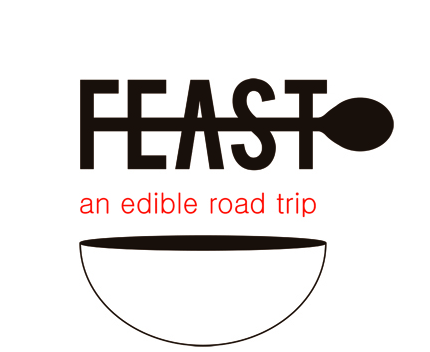Dining Next to a Nobel Peace Prize
We’ve been pleasantly surprised many times on this trip (like when we discovered tomato wine!), but probably never as much as when we arrived in Pugwash, Nova Scotia.
We were initially invited to stay by Lindsay’s friend Kate’s dad’s friend, John Eaton, who heard about us on Facebook (oh, the wonderful and obscure world of social media!) He invited us to come stay at a place called the “Thinkers’ Lodge,” and, realizing we would greatly benefit from ‘staying put’ for a week, we accepted his generous offer. We left Broadfork Farm for Pugwash, and thought “Great, we’ll stay at a cute ocean-side lodge, cook for ourselves, and get a bunch of writing done.” It sounds like a great way to spend a week, right?
When we drove up to the Thinkers’ Lodge, we realized that ‘cute ocean-side lodge’ was a huge understatement, and after a tour by Teresa Kewachuk, Director of Volunteer Activities, we shamed ourselves for not knowing where we were. The Thinkers’ Lodge is a National Historic Site, and was the site of the first Pugwash Conference on Science and World Affairs.
In 1955, Bertrand Russell and Albert Einstein issued a manifesto urging scientists to gather and discuss the imminent threat of nuclear weapons.
In 1957, Cyrus Eaton, prominent philanthropist, offered to host the world's leading scientists from both sides of the Iron Curtain to stay in his hometown of Pugwash, both at the Thinkers’ Lodge and billeted around town. The conference brought together many important figures from opposing countries, and created a space for interaction and dialogue about the realities of nuclear threat and the scientists’ responsibility to work for its eradication. They met at the Thinkers’ Lodge as individuals, rather than representatives of their governments; by doing so, they created a space where the world’s leading scientists and government representatives could realize that while they may disagree politically, they could identify on a human level.
Pugwash conferences continue to take place around the world, bringing scientists and public figures together to discuss cooperative solutions for global problems. Members still attend privately as individuals, and no recordings are allowed; because of these rules, Pugwash conferences can be productive in ways official negotiations cannot.
Displayed in the dining room, where we ate most of our meals, is a Lenin Peace Prize granted to Cyrus Eaton in 1960, and a Nobel Peace Prize granted in 1995 to both the Pugwash conferences and to Joseph Rotblat, one of the leaders of the original conference and the only scientist to walk away from the Manhattan Project. I highly recommend the documentary ‘The Strangest Dream,’ which outlines Rotblat’s remarkable life and his involvement with these disarmament meetings.
While in Pugwash, we went to the Saturday farmers’ markets, where we caught up with two new friends we’d met at Broadfork Farm.
Nick and Becca road tripped around Canada and the US, researching and visiting farms in preparation for starting their own, Good Thyme Farm—they’ve now completed their first year of farming. We discovered that during their trip, they worked for Brian Lendrum and Susan Ross, the goat herders and cheese makers we visited in the Yukon!
With a full week ahead and no appointments, we tried to catch up on work, enjoyed a more consistent sleep schedule, and reveled in the luxury of cooking for ourselves. Eager to put to use many of the ingredients we’d accumulated in the previous 3 months, we tried to make meals worthy of the Nobel Peace price next to which we dined.
In addition to getting a lot of writing done, we:
watched sunsets like this,
ate home made food like this,
and slept in beds like this.
We cannot wrap our heads around how, how we ended up in a place as remarkable and historically significant as the Thinkers’ Lodge, but we are extremely grateful to Teresa and John for their historical conservation efforts, and their generosity. Everyone should check out this amazing piece of history in Nova Scotia.
-DV
Special thanks to Speerville Flour Mill, Norman Hardie Winery, Broadfork Farm, and Good Thyme Farm for providing many lovely ingredients for our meals.





